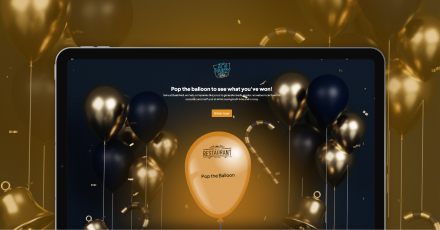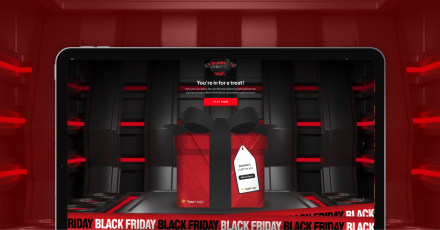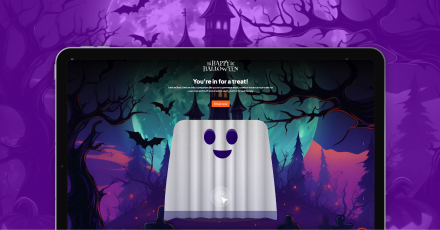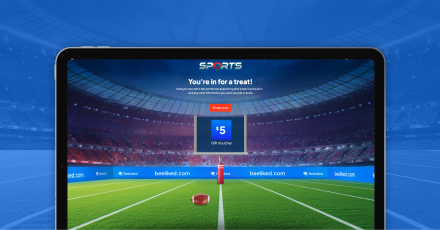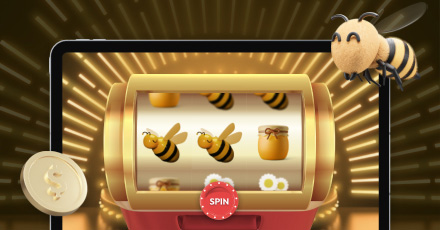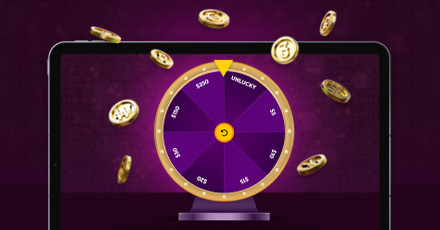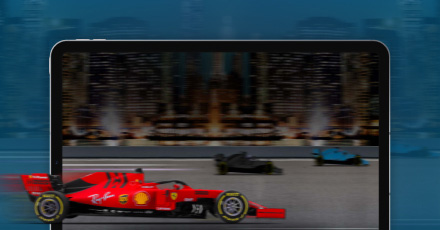Building lasting customer relationships in marketing is now more important than ever. Loyalty programs are essential for businesses striving to boost customer engagement and retention while fostering a sense of connection. However, having a loyalty program alone isn’t enough. Brands must focus on creating personalized experiences that leave a lasting impact on their customers to stand out. Gamification offers a powerful advantage here, transforming traditional loyalty strategies into dynamic, personalized systems that deeply resonate with customers. In fact, Gartner predicts that 70% of Global 2000 companies will use gamified applications to boost customer retention by 2025. In this article, we’ll explore how businesses can turn customers into loyal fans through gamified loyalty programs.
Redefining Customer Loyalty Programs

Traditional loyalty programs often rely on points, discounts, and rewards that feel transactional. While these methods can be effective, they often need more engagement that drives long-term loyalty. With the right gamification tools, personalization becomes much easier. With insights gained from customer behavior, brands can create tailored rewards and experiences that resonate with individual preferences. According to BI Worldwide, companies that implement gamification can see engagement rates increase by 47%. At the same time, Integrating customer engagement strategies that feel fresh and exciting will move your brand beyond generic offers and tap into your audience’s emotions. For example, loyalty programs built around games of chance – such as spin-to-win games – create a sense of excitement and anticipation that makes customers want to continue interacting with your brand. However, with so many brands competing for attention, personalization has become essential for standing out from the noise. Customization is no longer a bonus – it’s expected. Customers want experiences tailored to their specific needs and preferences, and this applies to loyalty programs as well. According to Epsilon, 80% of consumers are more likely to make a purchase when brands offer personalized experiences.
Personalizing your loyalty strategies means using data insights to craft offers and rewards that speak directly to individual desires. Gamification allows for highly personalized experiences. Tracking user behavior allows businesses to tailor games and rewards to fit each customer’s preferences. For example, frequent shoppers could gain exclusive access to special promotions, while less engaged customers may be given incentives to explore new products or services. Tailored rewards make customers feel appreciated and understood, increasing the likelihood of staying loyal to the brand.
Personalization is just the starting point; emotion is what makes customized experiences truly unforgettable. Loyalty programs that create emotionally rewarding experiences forge a deep connection between the brand and its customers. Gamification amplifies this effect by leveraging three key psychological drivers:
- The desire for achievement – satisfying customers’ need for progress and mastery.
- Social competition – fostering engagement and motivation through leaderboards and challenges.
- Reward and recognition – activating the brain’s reward centers, releasing dopamine, and associating the brand with pleasure.
As customers engage with gamified experiences, these psychological mechanisms work together to create a powerful emotional connection. This drives long-term loyalty and shifts customers’ focus from individual purchases to their ongoing relationship with the brand.
Audience Segmentation is Key to Effective Personalization
When you break down your customer base into distinct groups with shared traits, behaviors, or interests, you can create content and messaging that resonates. This targeted approach helps build meaningful connections with each segment, driving engagement and loyalty. It also makes practical sense, allowing you to focus resources on high-value groups and measure campaign effectiveness. The end result? Deeper customer relationships, increased loyalty, and a significant revenue boost.
To leverage this targeted approach effectively, brands must build a robust loyalty strategy that caters to diverse customer segments. Customer segmentation plays a crucial role here, as it allows you to create distinct experiences for different types of customers. A recent study by Salesforce supports this approach, with 66% of consumers expecting brands to understand their unique needs and expectations. Failing to meet these expectations can lead to decreased loyalty.
To keep your loyalty programs fresh and adaptable, consider incorporating gamification tactics tailored to various segments. For example, you can offer high-value customers exclusive games with bigger rewards, while casual shoppers play quick-win games with lower stakes. This segmented approach ensures everyone feels included, regardless of spending habits.
Maximizing the ROI of Loyalty Programs Through Gamification

As loyalty programs continue to evolve, businesses face a pressing challenge: balancing engagement with profitability. Fortunately, personalization can deliver a five- to eight-fold ROI for marketing spend and lift sales by 10% or more. Gamified loyalty programs offer a compelling solution, increasing customer loyalty while improving the bottom line.
Games of chance enable businesses to offer incentives that deliver value without breaking the bank. For example, a simple slot machine game offering discounts or free products might cost significantly less than traditional loyalty program rewards, yet generate high engagement. As a result, gamification becomes a viable strategy for small businesses and those looking to stretch their loyalty marketing dollars.
Loyalty programs must prioritize sustainability over short-term gains to build lasting relationships. Incorporating gamification elements to celebrate milestones for long-term goals helps achieve this. Customers who experience a sense of progression and accomplishment are more likely to become loyal brand advocates.
Moreover, gamification allows businesses to adapt quickly to changing customer needs. As preferences shift, the games and rewards can evolve alongside them, ensuring loyalty programs stay fresh and engaging. This flexibility is crucial in today’s fast-paced market, where customer loyalty can be fleeting. By demonstrating this adaptability, your audience will feel reassured and confident in the sustainability of their loyalty programs.
Turning Loyalty into Engagement With Gamification
Focusing on what truly matters to customers – personalization, emotional connections, and creative rewards – can transform loyalty programs into effective tools for engagement. Each interaction should feel meaningful and enjoyable, helping brands move away from transactional experiences and towards stronger, lasting loyalty. When customers feel appreciated and engaged, they don’t only participate, but they also become committed to the brand’s success.
At BeeLiked, we specialize in turning everyday interactions into unforgettable moments. We help brands maximize the impact of their loyalty programs through interactive promotions that drive audience engagement. Ready to turn your customers into lifelong fans? Explore how gamification can transform your customer loyalty strategy today.
